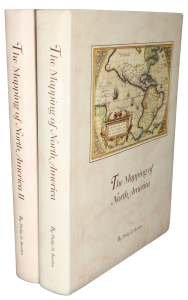Rare Maps and Prints
- World & Celestial
- North America
- West Indies, South & Central America
- British Isles
- British Isles
- English counties
- Large-scale
- Bedfordshire
- Berkshire
- Buckinghamshire
- Cambridgeshire
- Cheshire
- Cornwall
- Cumberland
- Derbyshire
- Devon
- Dorset
- Durham
- Essex
- Gloucestershire
- Hampshire
- Herefordshire
- Hertfordshire
- Huntingdonshire
- Islands
- Kent
- Lancashire
- Leicestershire
- Lincolnshire
- Middlesex
- Norfolk
- Northamptonshire
- Northumberland
- Nottinghamshire
- Oxfordshire
- Rutland
- Shropshire
- Somerset
- Staffordshire
- Suffolk
- Surrey
- Sussex
- Warwickshire
- Westmoreland
- Wiltshire
- Worcestershire
- Yorkshire
- Wales
- Scotland
- Ireland
- Western Europe
- Eastern Europe
- Middle East
- Africa
- Asia
- Australasia & Pacific
- Decorative Prints
- Title Pages
Mr. Philip D. Burden
P.O. Box 863,
Chalfont St. Giles, Bucks HP6 9HD,
UNITED KINGDOM
Tel: +44 (0) 1494 76 33 13
Email: enquiries@caburden.com
T. Laurie Murray was a surveyor, publisher and founder member of the Royal Geographical Society. His major cartographic work was the English county atlas entitled ‘An Atlas of the English Counties’ first published in 1830. It contained forty-four maps engraved by Edward Hoare and James Reeves and identified Murray as the publisher. A second edition the following year involved the imprint dates being altered to each plate.
The further history of the plates is murky, particularly after they left Murray’s possession. William Robson is not even listed in the revised edition of ‘Tooley’s Dictionary of Mapmakers’. Some of the county bibliographies refer to him issuing later states of the respective county maps and one complete collection of the maps in this state exists in a private English collection. Robson issued commercial directories from 1819 to about 1842 and it appears also issued the Murray maps separately. In about 1838 he expanded into producing county directories. This was a fiercely competitive arena and one in which it appears he suffered against the more professional and thorough opposition.
Hodson in his study of Hertfordshire identifies a work in the Guildhall Library entitled ‘Robson’s Commercial Directory of … with a beautifully engraved map of each of the seven counties … for 1839’. The makeup of this item appears to be similar. A search on Copac records a few Commercial Directories of individual and groups of counties. None are recorded for Cumberland, Northumberland, Westmoreland or Liverpool. The most notable change to each map is the removal of Murray’s imprint. Further revisions include the addition of the poor law unions on each map. The Poor Law of 1834 brought about the grouping of local parishes to form Poor Law Unions, each with its own workhouse. The latest information however appears to be the railway network. The Maryport to Carlisle railway is illustrated which opened in 1845. Beresiner pp. 164-5; Burgess Kent 125/v; not in Carroll (1996); not in Higham (1997); Hodson (1974) no. 90; not in Tooley’s Dictionary (1999-2004).
The further history of the plates is murky, particularly after they left Murray’s possession. William Robson is not even listed in the revised edition of ‘Tooley’s Dictionary of Mapmakers’. Some of the county bibliographies refer to him issuing later states of the respective county maps and one complete collection of the maps in this state exists in a private English collection. Robson issued commercial directories from 1819 to about 1842 and it appears also issued the Murray maps separately. In about 1838 he expanded into producing county directories. This was a fiercely competitive arena and one in which it appears he suffered against the more professional and thorough opposition.
Hodson in his study of Hertfordshire identifies a work in the Guildhall Library entitled ‘Robson’s Commercial Directory of … with a beautifully engraved map of each of the seven counties … for 1839’. The makeup of this item appears to be similar. A search on Copac records a few Commercial Directories of individual and groups of counties. None are recorded for Cumberland, Northumberland, Westmoreland or Liverpool. The most notable change to each map is the removal of Murray’s imprint. Further revisions include the addition of the poor law unions on each map. The Poor Law of 1834 brought about the grouping of local parishes to form Poor Law Unions, each with its own workhouse. The latest information however appears to be the railway network. The Maryport to Carlisle railway is illustrated which opened in 1845. Beresiner pp. 164-5; Burgess Kent 125/v; not in Carroll (1996); not in Higham (1997); Hodson (1974) no. 90; not in Tooley’s Dictionary (1999-2004).
ROBSON, William
Robson's Commercial Directory of Cumberland, Northumberland, and Westmoreland; The town of Berwick on Tweed, and Liverpool; An Alphabetical List of the Names, Residences, and Professions of the Commercial Establishments, with a Classification of Trades ... with a Beautifully Engraved Map of each of the Counties ...
Robson and Co., London Directory and Court Guide Office, 4 Cloak Lane, Cheapside, London, c.1845
Quarto (245 x 155 mm.), full contemporary cloth, ornate blind panelled boards, embossed gilt title to upper board, spine with blind ruling. With title page, pp. (2), 102, (2), 242, 30, Liverpool pagination 101-258, 301-466, with 3 large folding maps in early outline colour, each with binders’ tears, otherwise in good condition.
Stock number: 9967
SOLD








